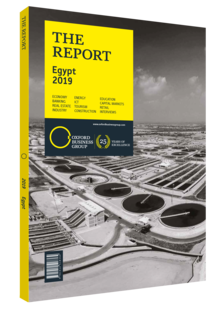Public safety net supports sustainable growth of Egyptian farming
With agriculture accounting for a large part of the earnings of many families, ensuring livelihoods are not jeopardised by bad harvests has become increasingly important as the population expands. An important step towards accelerating the development of better agricultural support policies was taken in June 2018, with the approval of a new insurance scheme for Egypt’s agricultural crops by the country’s Financial Regulatory Authority.
In another positive move, the Insurance Federation of Egypt announced in October 2018 that it would set up a technical committee to help develop the segment further, which noted that despite the growth in agricultural premiums globally, the same had not been witnessed domestically.
Improving the conditions for agriculture insurance is also viewed by the authorities as a way of encouraging further private investment in the sector to match the government’s commitments. For FY 2018/19 (ending June 2019), for instance, Egyptian authorities announced an investment of $145m into agricultural projects, and encouraging private sector companies to match the state’s level of commitment will require a degree of protection in what can often be an unpredictable industry.
Critical Protection
Involving insurers in agriculture could have long-term benefits for the domestic economy. As the population grows, agriculture’s role in ensuring long-term food security will only increase. The sector accounts for over 14% of GDP, but its contribution to the broader economy spills over into several critical industries, providing the necessary inputs for key earners such as agro-industrial processing activities and textile manufacturing. The African Development Bank, for example, estimates that a 1% increase in agricultural GDP can result in a 3% reduction in poverty.
Insuring agricultural activity is critical to maintaining jobs as well. Between 2000 and 2017 the sector accounted for 29% of total employment in the country, according to figures from the World Bank. New insurance products could protect against losses caused by damaged crops and potentially serve to protect farmers’ funds, firms running land reclamation operations, and land owned by the state.
Securing the Future
The retention of farmland is also set to be strengthened through the new insurance mechanism. Population growth and an averseness to the risks inherent in farming has at times seen agriculture land replaced by construction. Reducing these risks will likely help combat this, as well as secure the long-term economic gains of the sector and reduce financing costs.
According to a paper published by the World Bank in early 2018, agriculture finance and insurance empower poor farmers to increase their wealth and food production. The organisation also notes that these solutions help farmers fund long-term investments to support sustainable growth.
Climate Risks
Changing climate patterns also have an influence on the sector’s sustainability. In Egypt, as in other countries in the region, insuring crops has increasingly become a necessity as the region grapples with the consequences of rising temperatures. The UN has already classified Arab countries as some of the most water insecure and dependant on food imports internationally.
Furthermore, the international body has estimated that by 2030 global warming might reduce water and food productivity in the Middle East by 20%. Protecting agricultural output and farmers’ returns is even more critical in Egypt, where a large majority of farming activity remains centred in the Nile Valley and Nile Delta regions – a very small proportion of the country’s total territory. As the Egyptian government continues to invest heavily in developing the industry, protecting that investment has become necessary to scale production capacity.
You have reached the limit of premium articles you can view for free.
Choose from the options below to purchase print or digital editions of our Reports. You can also purchase a website subscription giving you unlimited access to all of our Reports online for 12 months.
If you have already purchased this Report or have a website subscription, please login to continue.

